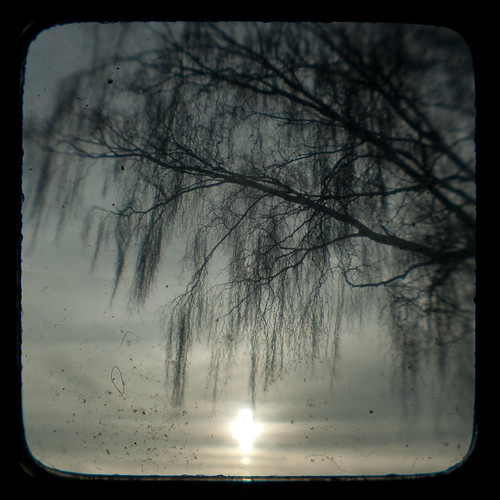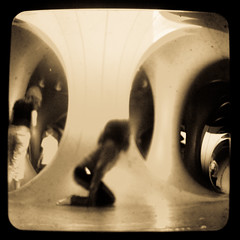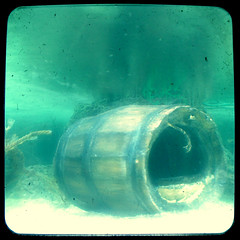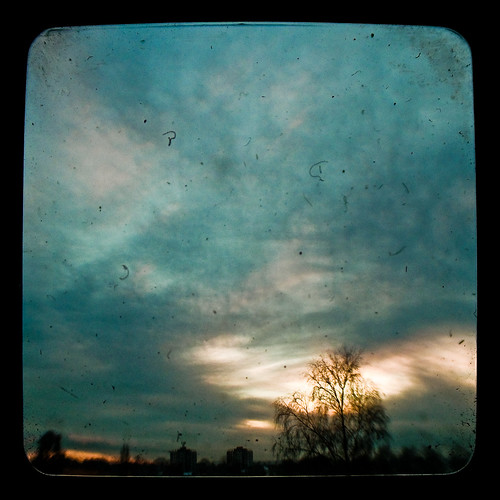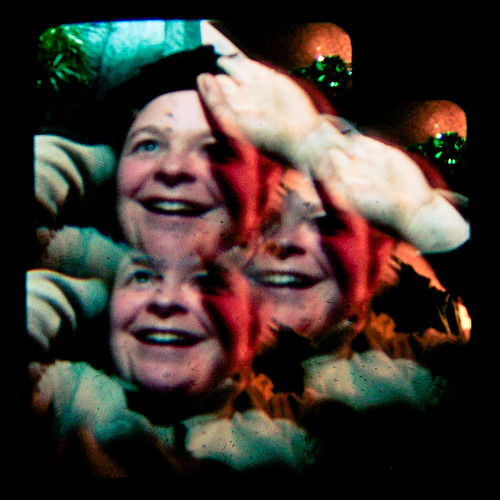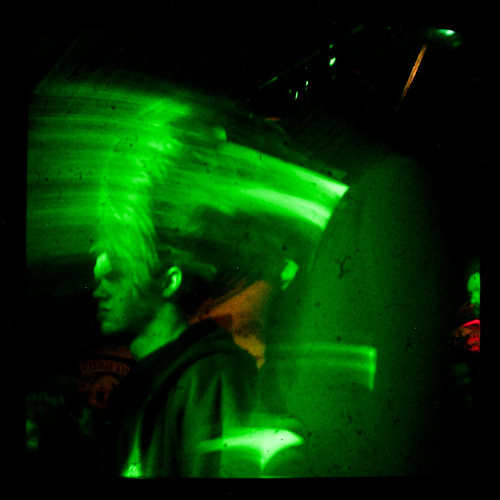When I sell TTV images I want to have a range available. The current plan, and don’t hold me to this, is some very large montages for £100 and above, some nicely framed prints for £20-30 and some budget entry-level pieces for a fiver, aimed squarely at the casual browsers at the market stalls. The problem is it’s very hard to find budget square frames - everything at the low end is a variation on 6×4 inches, the standard size for prints. How can one squeeze a square picture into a rectangle without all that space on the sides looking a little odd? I’ve been playing around with putting two TTVs on one print (a diptych) but I think I’d rather save those for the larger prints.
Today I got a nice comment from a fellow Flickr user by the name of Macquillage of Curiosity who also dabbles in the art of the TTV. Take a look at this one:
A little tilt helps the image fill the rectangular space. Very nice.
Obviously the TTV image has to lend itself to a tilt and if I have a problem with this it’s that I’ve always thought of my TTV pics as being seen straight. I’ve probably discarded pictures that would be perfect like this and gone with ones that by definition aren’t.
Still, having a scan through the files I found a couple which could work and spent a few minutes in Photoshop tilting them. Click through for the original on Flickr.
This one sort of works but I suspect the edge of the TTV needs to be more distinct. (It’s also not a great photo, but this is just an experiment.)
This one is a lot more satisfactory. I suspect I’m finding it more satisfactory because it allows me to align the image properly and that appeals to my anal symmetry loving self. But there’s something of a bish-bash-bosh of the lines starting with the guitar and working out. Also the shift from white through blue to black is rather pleasing.
Interesting that the two pics I went for were from music events where I’m less able to compose a shot and more likely to be swinging free and hoping for the best. Maybe this’ll be how I do my live music photos from now on. Or at least some of them.
Anyway, thanks to Ms Macquillage for her inspiration. Go check her photos on Flickr and if you like them, tell her.
